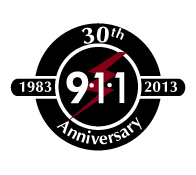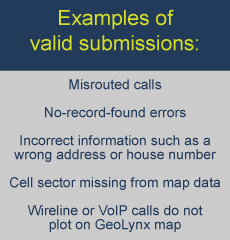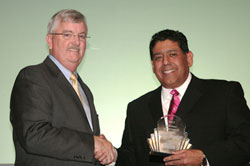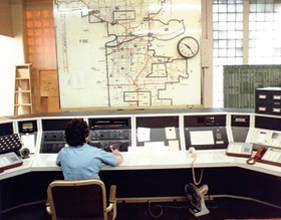
MAY 2013
16th Annual Telecommunicators Appreciation Celebration and Outstanding Performance Awards
|
The Kansas City Regional 9-1-1 system celebrated its 30th anniversary and honored emergency communications personnel at the 16th annual Telecommunicator Appreciation Celebration on Friday, April 12, at the Uptown Theater.
The celebration provided an opportunity for attendees to reflect on the technological and organizational advances made in the field since the regional 9-1-1 system was launched in 1983.
Nine individuals received Outstanding Performance Awards at the event for their demonstrated valor and commitment to the field of public safety communications:
- Everyday Hero: Elizabeth Hoon, Lee’s Summit Police Department.
- Outstanding Individual Performance in a Critical Incident: Kris A. Cochran, Grandview Police Department, for his part in organizing the necessary personnel and resources to save a woman who was abducted from her home.
- Outstanding Team Performance in a Critical Incident: Chelsea Allen, Darlene Macleod, Hollie Meeks and Jennifer P. Thao, Kansas City, Kan., Police Department, who worked together to save a critically injured woman who was abducted from her vehicle after a hit-and-run accident.
- Outstanding Supervisory Performer: Sgt. Brenda Gammell, Johnson County Sheriff’s Office.
- Outstanding Training Performance: Cindy Staton, Miami County Sheriff’s Office.
- Lifetime Achievement: Anthony Bernal, Overland Park Police Department.
The celebration was held the Friday before National Public Safety Telecommunicators’ Week — a time to honor the unsung heroes who staff the nation’s 9-1-1 centers and other emergency dispatch locations.
Regional 9-1-1 program celebrates 30th anniversary
 2013 marks the 30th anniversary of 9-1-1 service in the Kansas City region, but the story goes even further back. In 1976, the Mid-America Regional Council started working with Southwestern Bell to establish 9-1-1 in the region through a cooperative effort that crossed the state line.
2013 marks the 30th anniversary of 9-1-1 service in the Kansas City region, but the story goes even further back. In 1976, the Mid-America Regional Council started working with Southwestern Bell to establish 9-1-1 in the region through a cooperative effort that crossed the state line.
Steve Davidson, communications systems manager for the Johnson County Sheriff’s Office, has seen all of the technological and training transitions since
9-1-1 was implemented 30 years ago and almost all of the growth and planning since this regional effort started in 1976.
"The region has grown and sprawled out and 9-1-1 has grown with the larger community," Davidson said. "When you look at the fact that we serve more than 100 municipalities across the Kansas City region, you realize that it's no accident that the regional 9-1-1 system works well."
While Kansas City, Mo., Mayor Richard Berkeley signed the contract for the installation of 9-1-1 in 1981, the three-digit emergency number was not available to Kansas City-area residents until February 14, 1983. The original 9-1-1 system handled 800,000 calls a year. Today it has grown to nine counties, with the addition of Ray County in 1998 and Miami County in 2004 , and nearly 4 million 9-1-1, other emergency and administrative calls are taken each year.
The system has also seen major technological changes in the past 30 years. In the early days of 9-1-1, call cards were used to manage emergency call information. Telecommunicators would record by hand the caller’s name and phone number and the address of the incident, and relay this and other pertinent information to the units responding. In 1983, some PSAPs had the “little black box,” indicating a caller’s phone number. Today, communications technology shows not only the number a call comes from, but in most cases provides an exact location.
|
"When I began work at the Lenexa Police Department in 1977, one computer was the size of a small building and wasn’t as powerful as today’s smart phone," Davidson said. "I’m not big on dwelling in the past. Today’s generation of dispatchers were born into the world of multi-tasking with advancing technology. The region is continuing to move forward."
For Steve Davidson and many other 9-1-1 professionals, the past 30 years weren’t just about the technological changes, but also about the relationships built in the community and the PSAPs.
"The technology is fine, but it’s really about the people. I have friends in the business from coast to coast and it really has been great to see people progress as individuals," Davidson said. "This is one field where every single day there is something new to learn and I think the next 30 years is going to be just as exciting."
Error report submission contest
It’s that time of year again — time for the annual PSAP error report contest! Similar to last year, the contest will run through the month of June, but unlike last year we will be announcing two winners. One winner will be based on the PSAP with the highest number of valid error reports, divided by the submitting PSAP’s call volume. The second contest winner will be based on the total valid PSAP error reports for the month of June.

Contest Rules:
- Contest runs from June 1 through
June 30. - You can only submit errors
identified during the course of
handling a 9-1-1 call. - You can enter all database or
map errors using Info Manager
on a 9-1-1 workstation, or follow
your agency’s procedure for
submitting errors.
This contest is more than a friendly competition, it is also an opportunity to help clean up the region's 9-1-1 database and map data — which could make your job easier when handling a call and could potentially help your agency provide faster response times to the citizens in your communities. Winners will be announced early July.
Questions?
Contact Saralyn Hayes at 816/701-8314.
Missouri considered 9-1-1 funding legislation
During the 2013 legislative session, MARC’s Regional Public Safety Communications Program provided educational materials to state representatives highlighting 9-1-1 funding in Missouri. State Representative Jeanie Lauer introduced House Bill 653, which would have provided local governments more options for funding 9-1-1 systems — something that has long been a priority for local communities and part of the MARC Board’s legislative platform for the region.
On April 30, the Missouri House of Representatives passed HB 653, but the bill did not make it to the Senate floor for debate before the end of the session on May 17.
The bill would have allowed counties to propose ballot issues that, if approved by local voters, would allow monthly fees of up to $1.50 to be charged on any device capable of contacting 9-1-1. The fees would have been part of the user’s monthly bill and used for the purpose of funding 9-1-1 services. Counties could then eliminate the current surcharge on landline phones.
The bill also included a 3 percent surcharge to prepaid wireless phone services in all but four charter counties (Jackson, Jefferson, St. Charles and St. Louis counties). These fees would have gone to a state fund to help pay for 9-1-1 improvements in counties that do not have call location equipment and other modern 9-1-1 features. Also, 10 percent of the money would have gone to the Poison Control Center.
Currently, Missouri is the only one of the 50 states that does not require cell phone users to help support 9-1-1, even though 70 percent of the 9-1-1 calls now come from wireless phones. As more and more people give up their landline phones and use only wireless devices, there have been dramatic decreases in funding for emergency response systems.
MARC and the Regional Public Safety Communications Program would like to thank public safety personnel who contacted their representatives and attended legislative hearings to testify and provide valuable information on 9-1-1 funding. While the bill did not successfully reach the Senate floor, the educational and legislative efforts effectively raised the level of awareness on 9-1-1 funding and paved the way towards future legislative success.
Raymore Police Department, Shawnee Police Department and Miami County Sheriff’s Office upgrade to Patriot equipment
|
The Communications Division of the Raymore Police Department, Miami County Sherriff’s Office and the Shawnee Police Department are the latest successful upgrades to new Patriot equipment. Raymore Police Department completed upgrades on April 1; Miami County upgrades were finalized on May 13; and Shawnee Police Department upgrades were completed on May 22. In the short term, the upgrades mean these PSAPs have faster computers and are now operating on the regionally owned microwave system. In the long term, the upgrades help these communications centers and the MARC region prepare for the transition to Next Generation 9-1-1(NG9-1-1) capability.
Miami County Sheriff’s Office, Raymore Police Department and Shawnee Police Department now have 22-inch, touch-screen monitors and computers operating Windows 7 for dispatchers. These new computers include the updated Patriot software, designed for NG9-1-1. Although NG9-1-1 is not operating yet, these upgrades enable these PSAPs to receive text messages, video, pictures and crash notifications once NG9-1-1 rolls out.
While the upgrades provide improved equipment for the three PSAPs, this transition also provides cost savings for the region. As PSAPs upgrade to Patriot equipment, their network connection will be transitioned from leased T1 circuits to regionally owned microwave. The microwave system provides the upgraded bandwidth capabilities, making data transmission faster and reducing reliance on outside providers.
The Patriot upgrades also mean fewer controllers will be needed on the regional 9-1-1 system. For example, Raymore Police Department, Miami County Sheriff’s Office and Shawnee Police Department were able to remove their ECS-1000 controllers and connect to the Johnson County Communications Center Patriot server through RAMBIS.
Currently there are two Patriot servers in the MARC region. Johnson County Communications Center hosts one server and the other server is housed at the Kansas City Missouri Police Department South Patrol station. It is estimated that one-third of the region's PSAPs will be upgraded to the Patriot system by the end of 2013 and the entire metro should be upgraded to new Patriot equipment and operating on the RAMBIS system by 2015.
Upcoming Training Opportunities
May 30: Refresher GeoLynx
June 4: 9-1-1 Crisis Calls
June 6: Officer Down and Firefighter Mayday!
June 10–14: Basic Telecommunicator Training
June 24–27: Communications Training Officer (CTO)
July 2: KCTEW - Kansas City Terrorism Early Warning
July 9: 9-1-1 Customer Service
July 11: TTY Training
See a complete list of upcoming
9-1-1 training opportunities and GTI courses included in the
9-1-1 training consortium membership.
Special Events and Trainings
June 17–21: Communications Technician (COMT) Training
Maintenance Services
If your issue requires immediate attention, or if you think it might, please call 816/421-2911 any time day or night.
In nonemergency situations, you may email maintenance requests or questions to 911techs@marc.org 816/421-2911.
![]() Remember, it is important to reboot your 9-1-1 workstations at least once each week, Monday through Friday between 8 a.m. and 5 p.m., when a MARC communications technician is available should you experience any problems. This will automatically update the GeoLynx map data on your workstation.
Remember, it is important to reboot your 9-1-1 workstations at least once each week, Monday through Friday between 8 a.m. and 5 p.m., when a MARC communications technician is available should you experience any problems. This will automatically update the GeoLynx map data on your workstation.
PSAP Managers Forum
The PSAP Managers Forum is an excellent resource for managers and supervisors to share and exchange ideas, concerns and suggestions.
Have a story you want to share?
Email Paul Lampe or call 816/701-8366.
600 Broadway, Suite 200 | Kansas City, MO 64105
ph: 816/474-4240 | fax: 816/421-7758
www.marc.org/publicsafety | e911@marc.org


